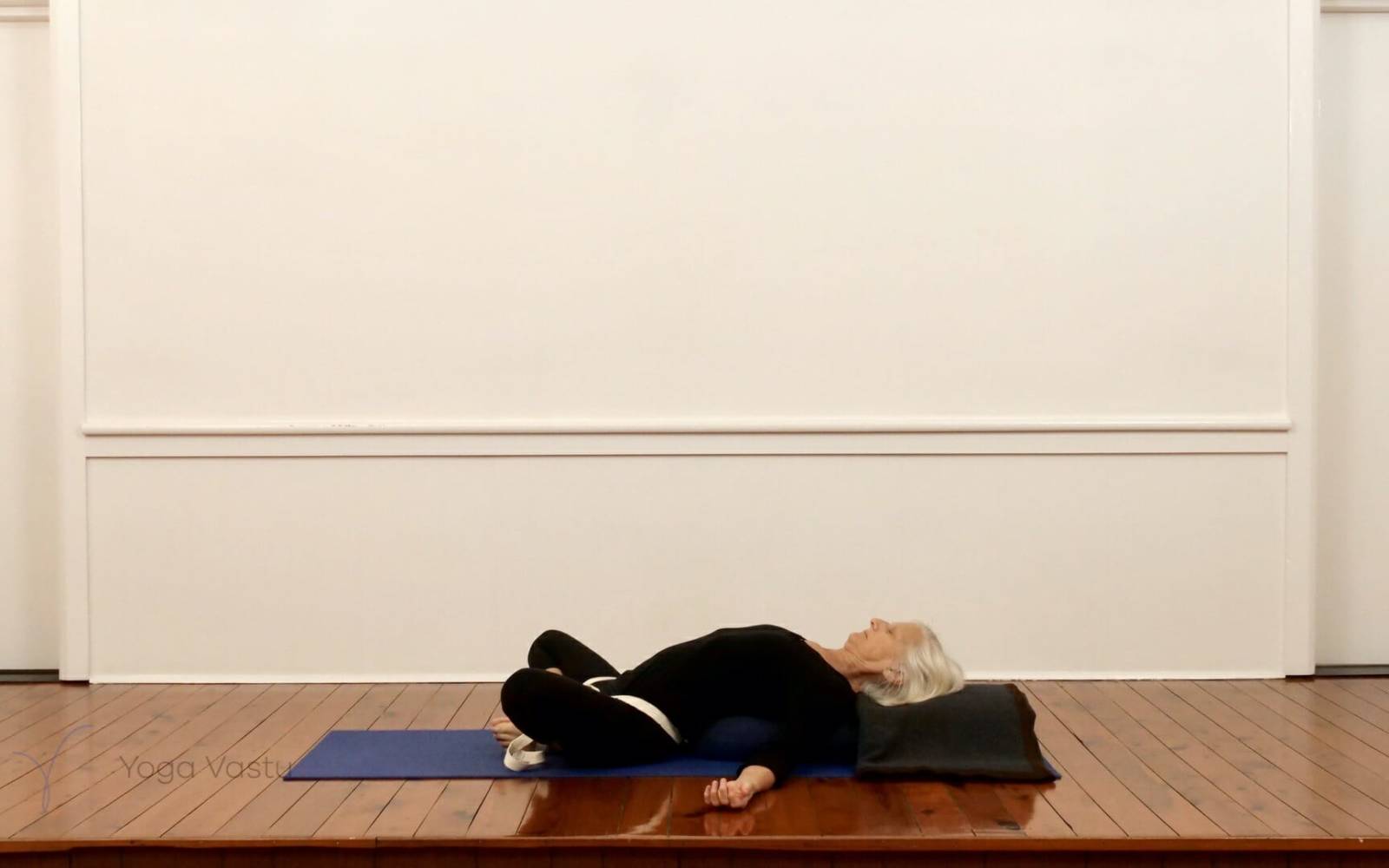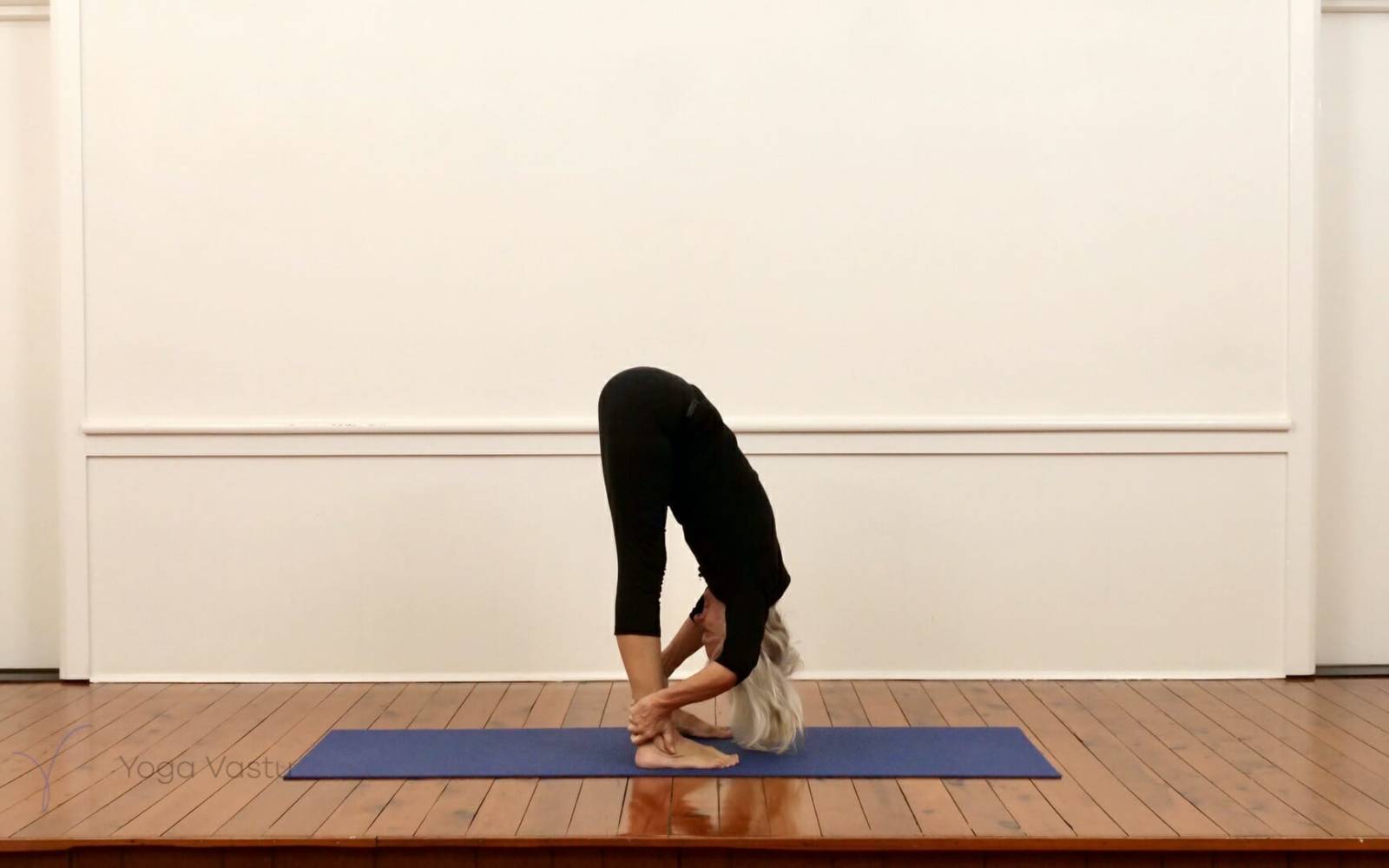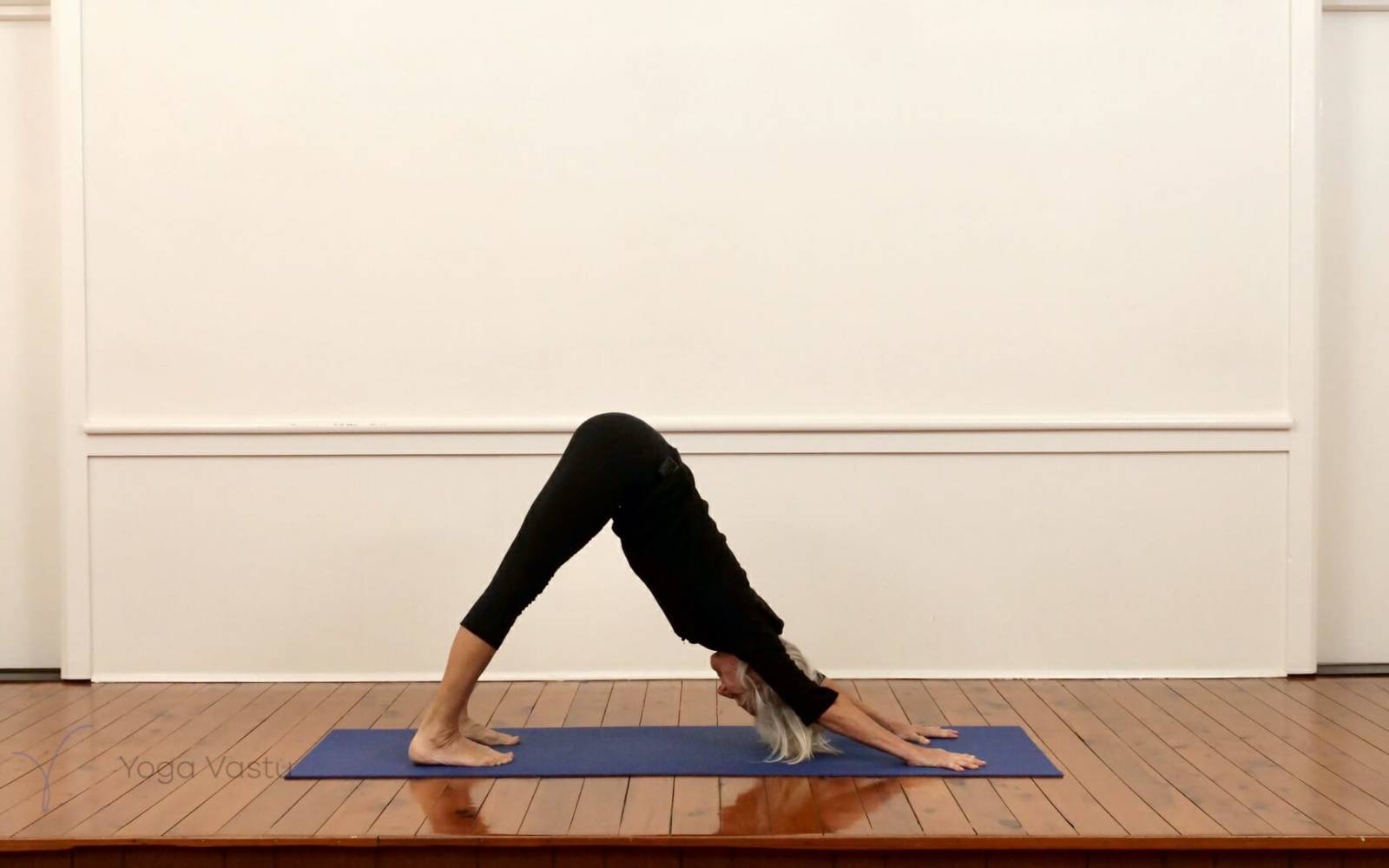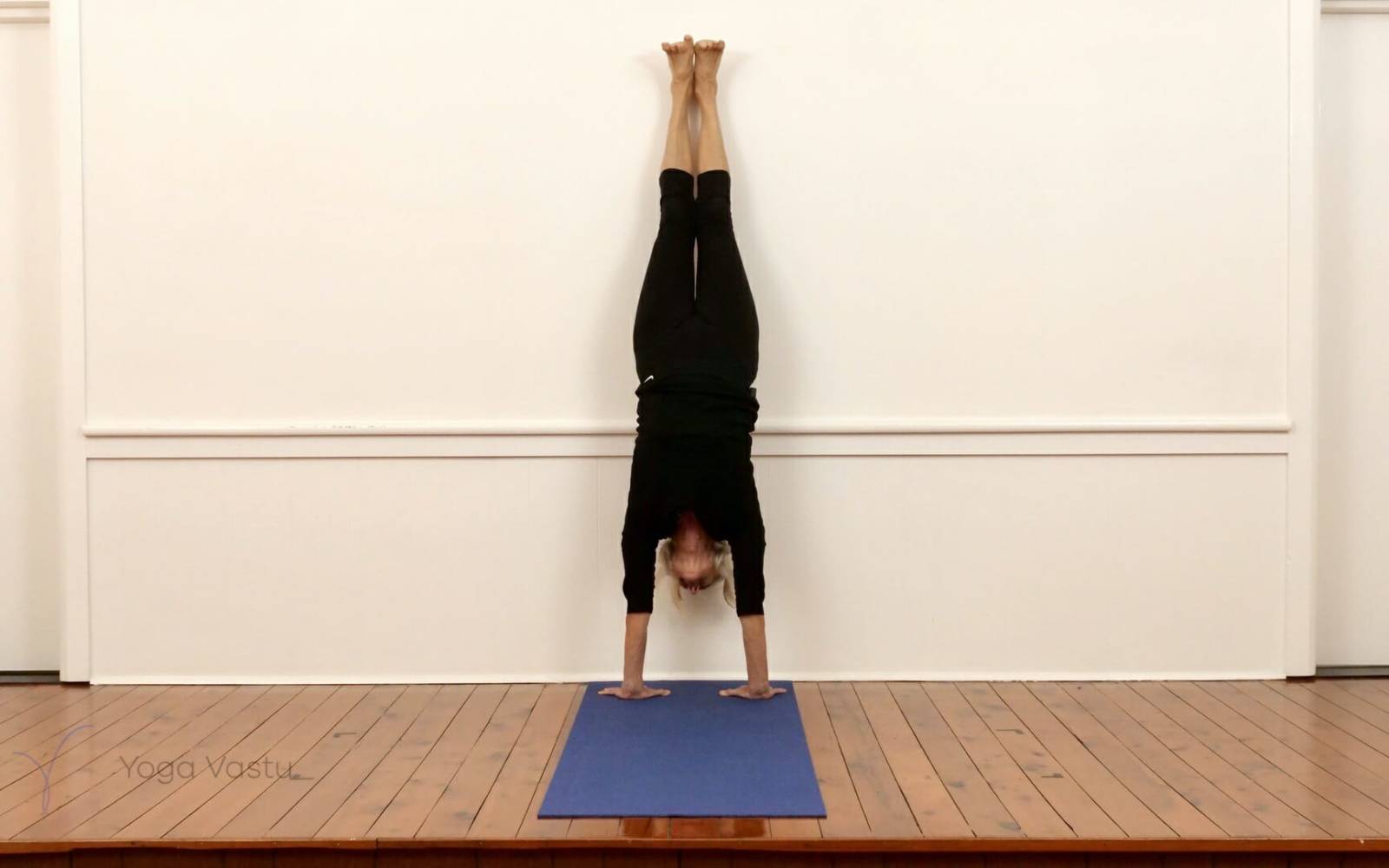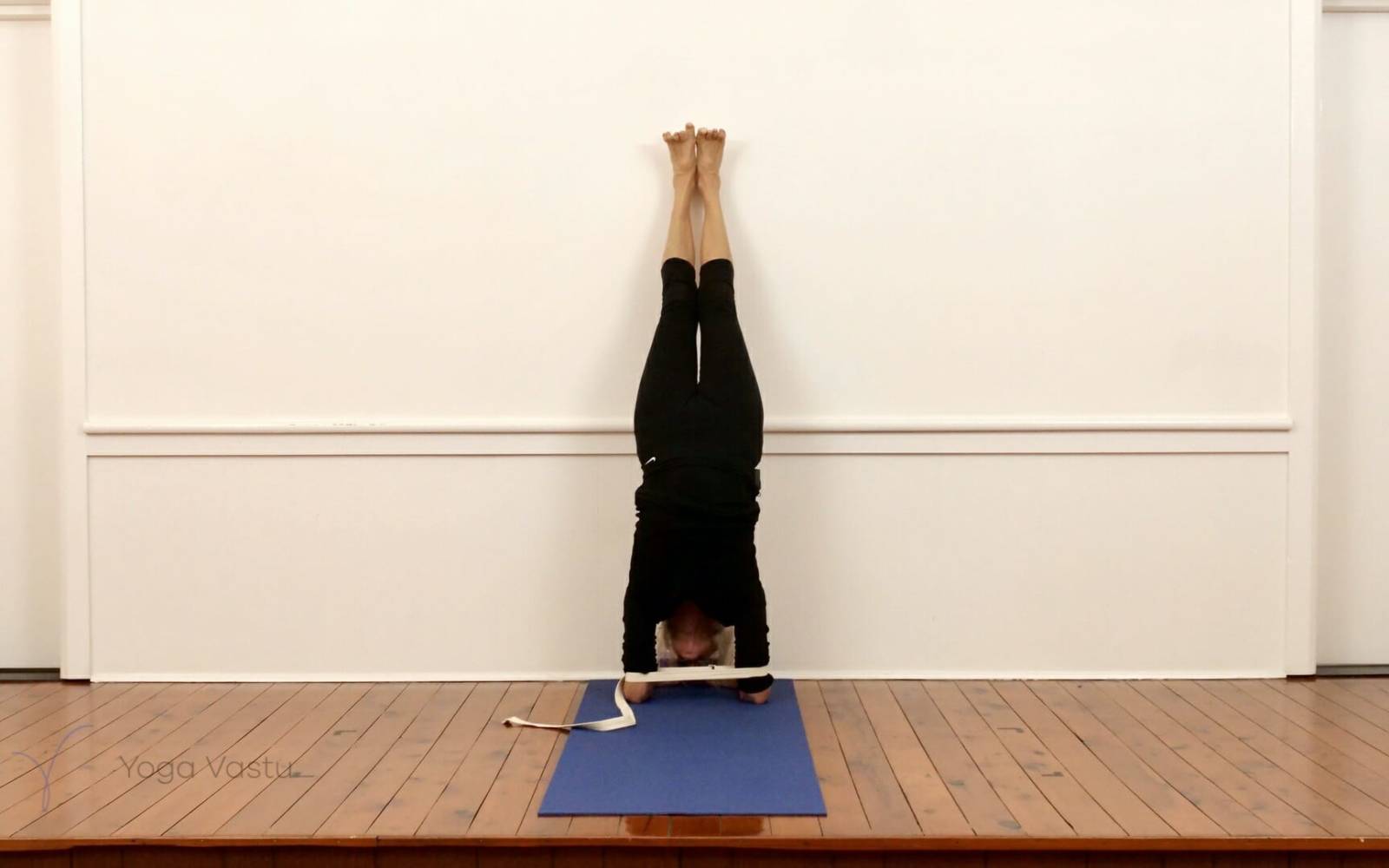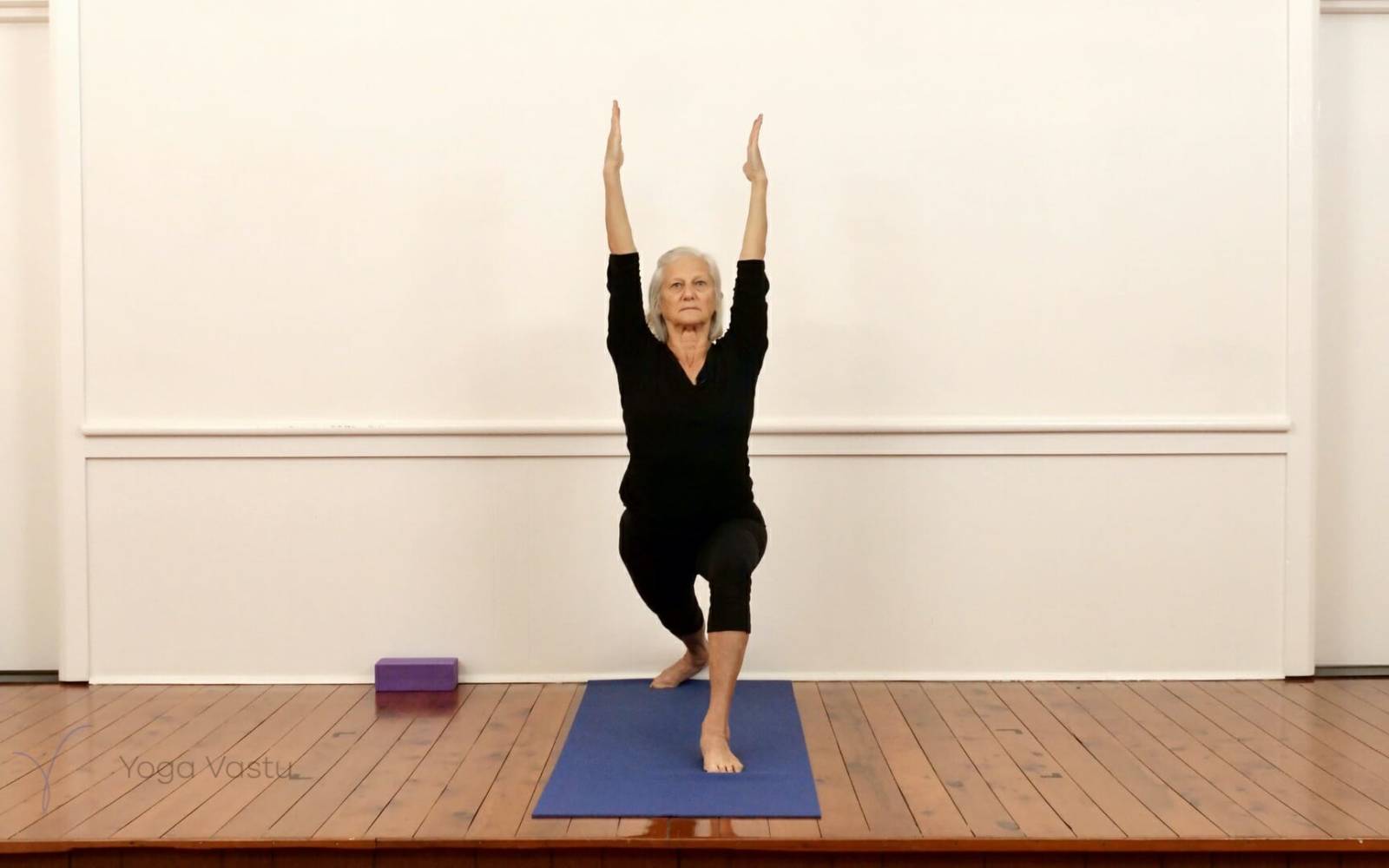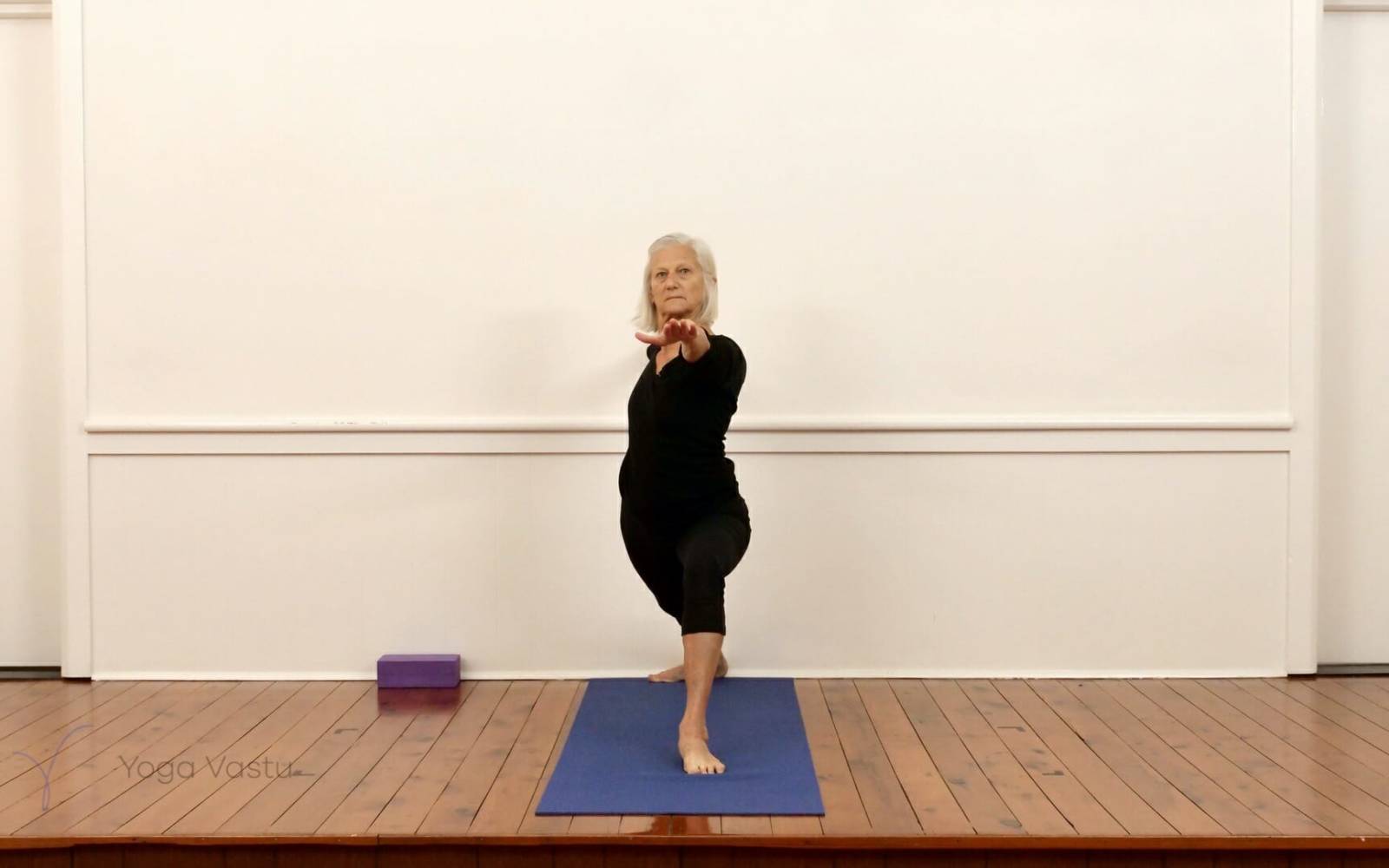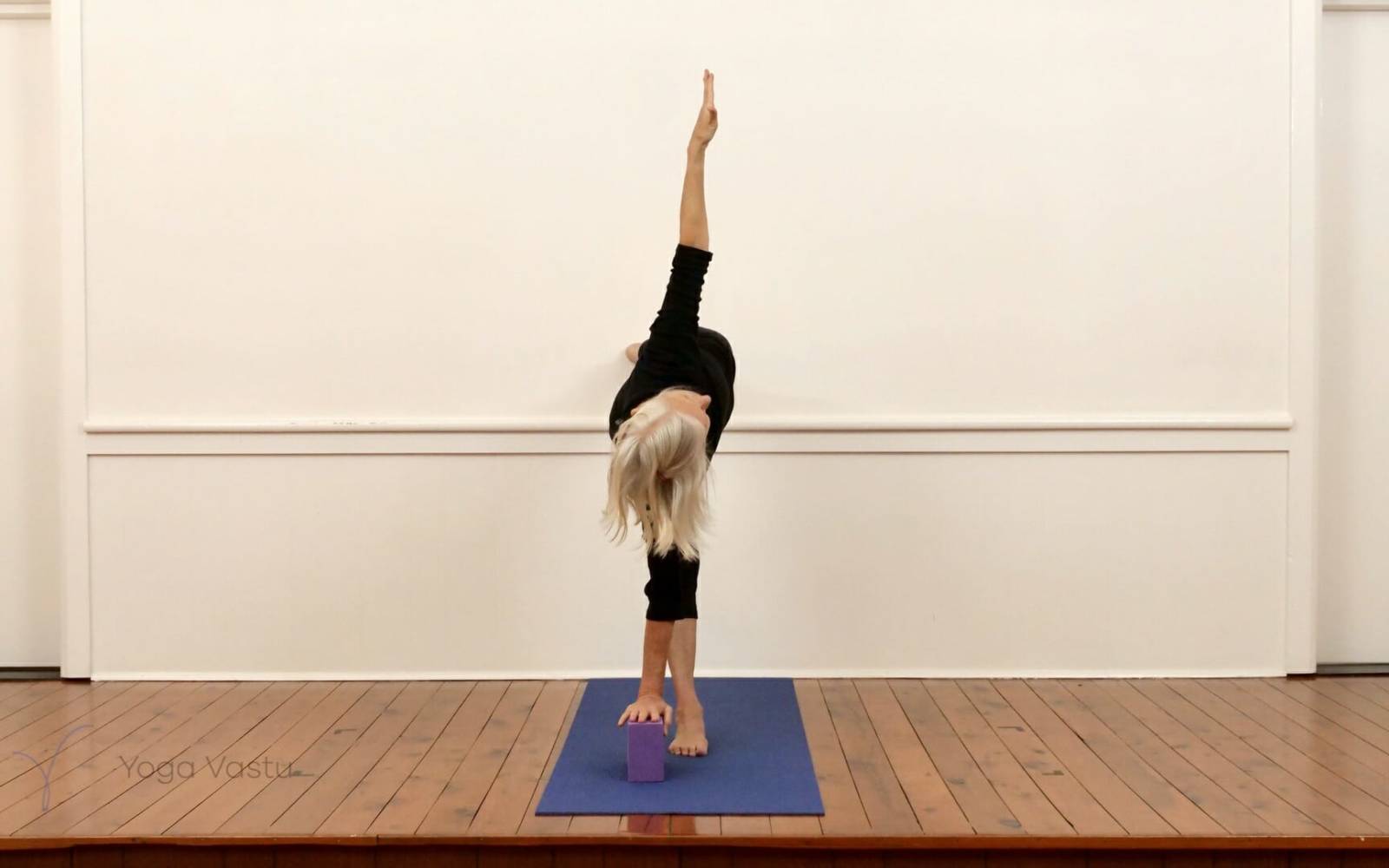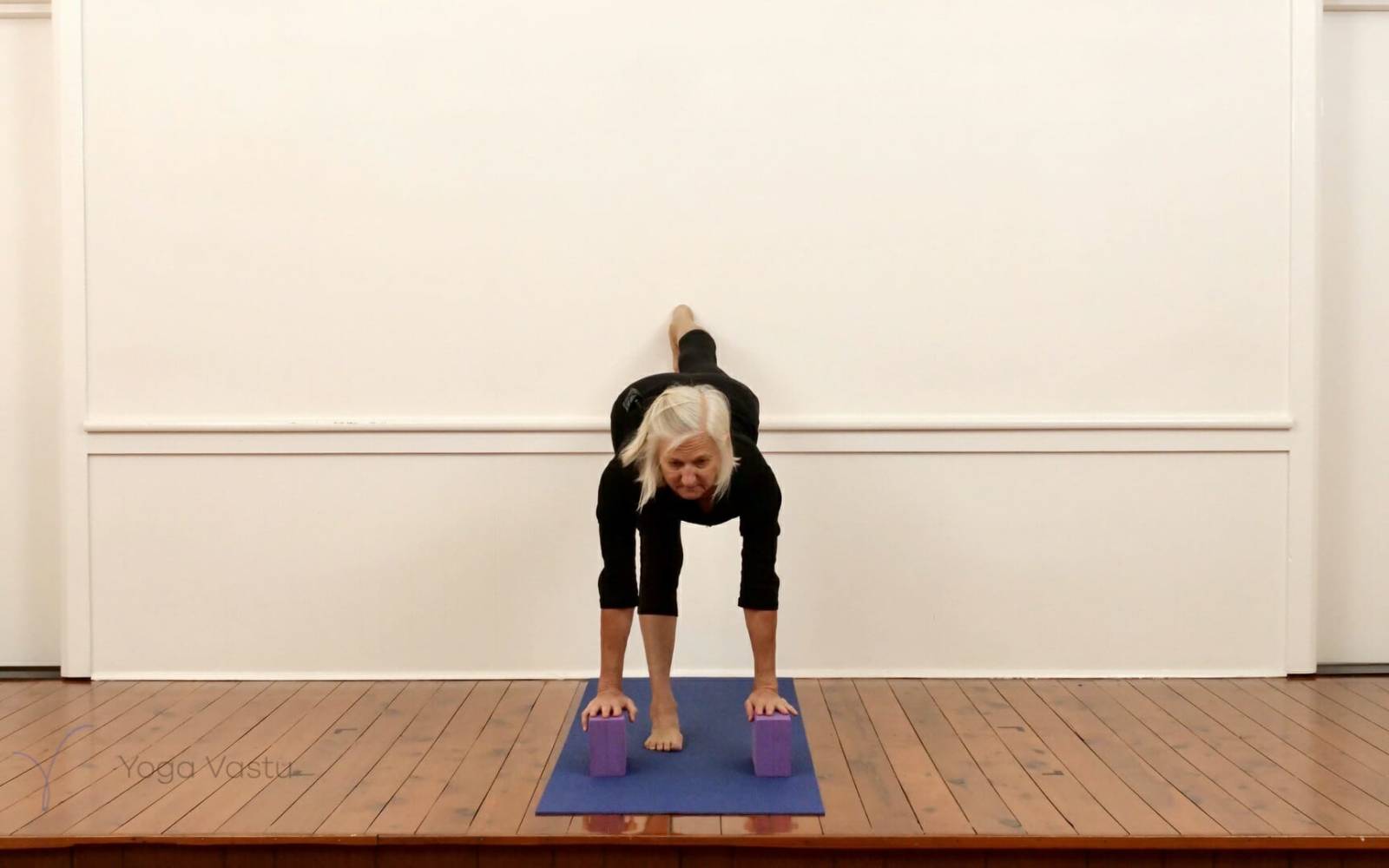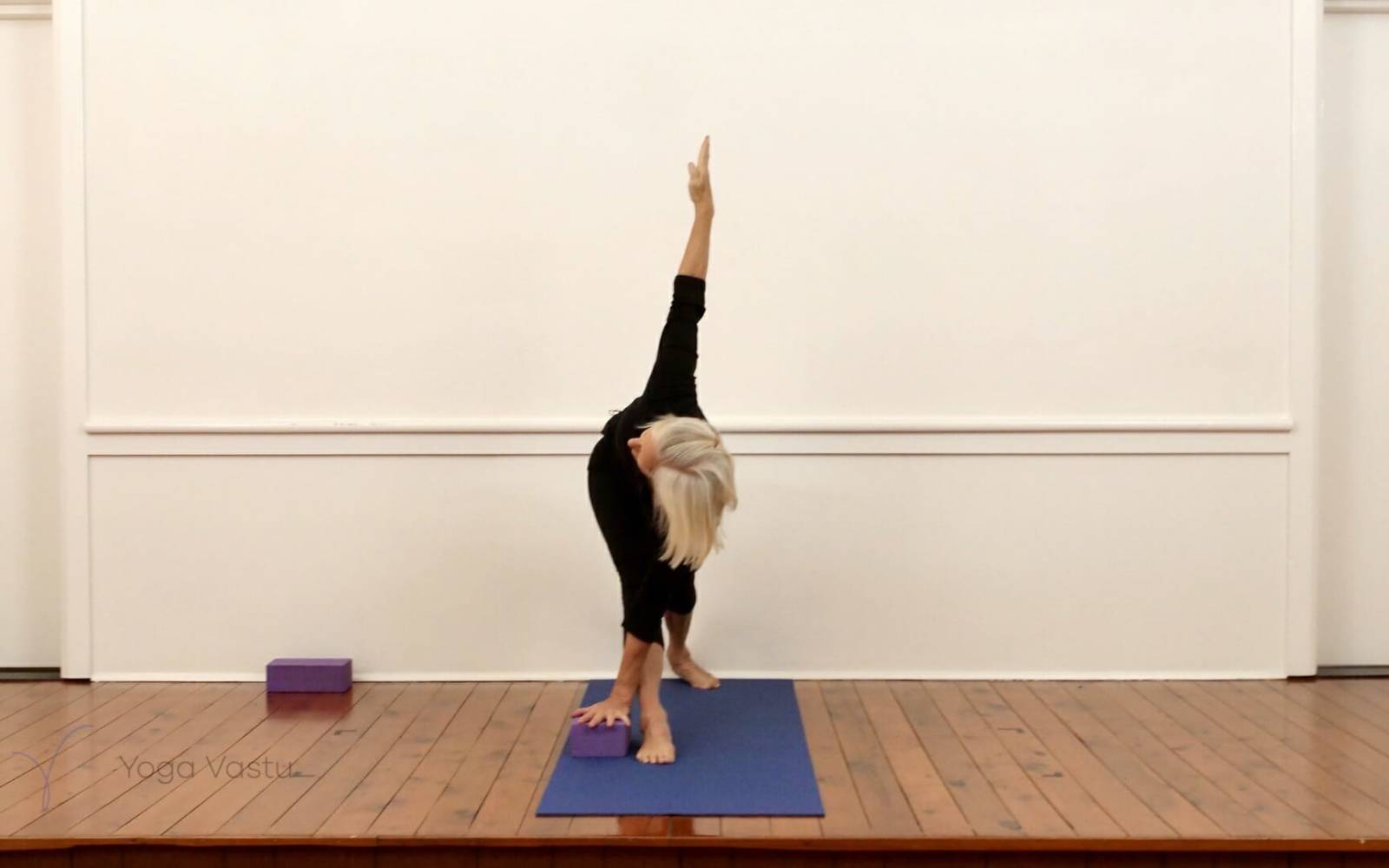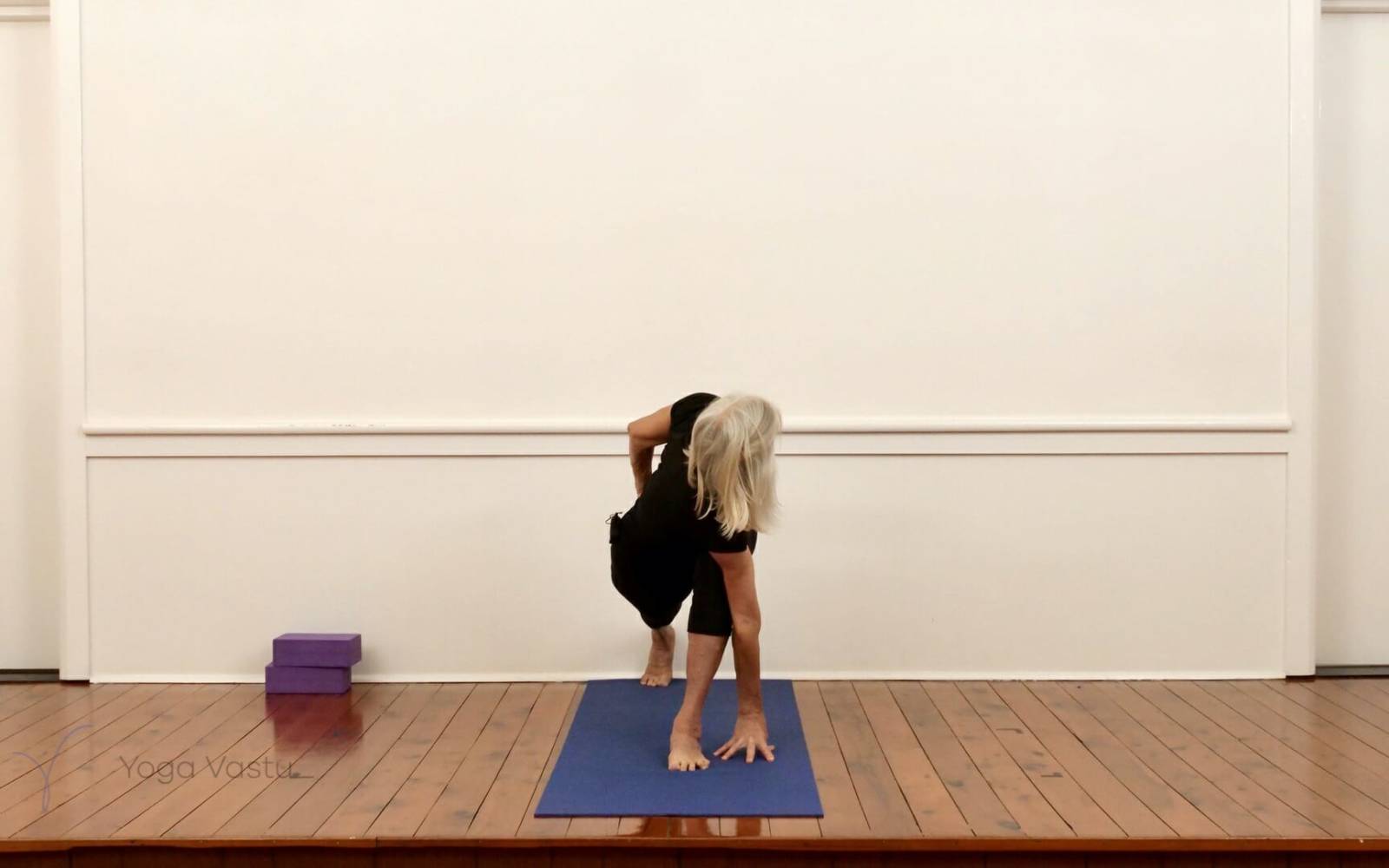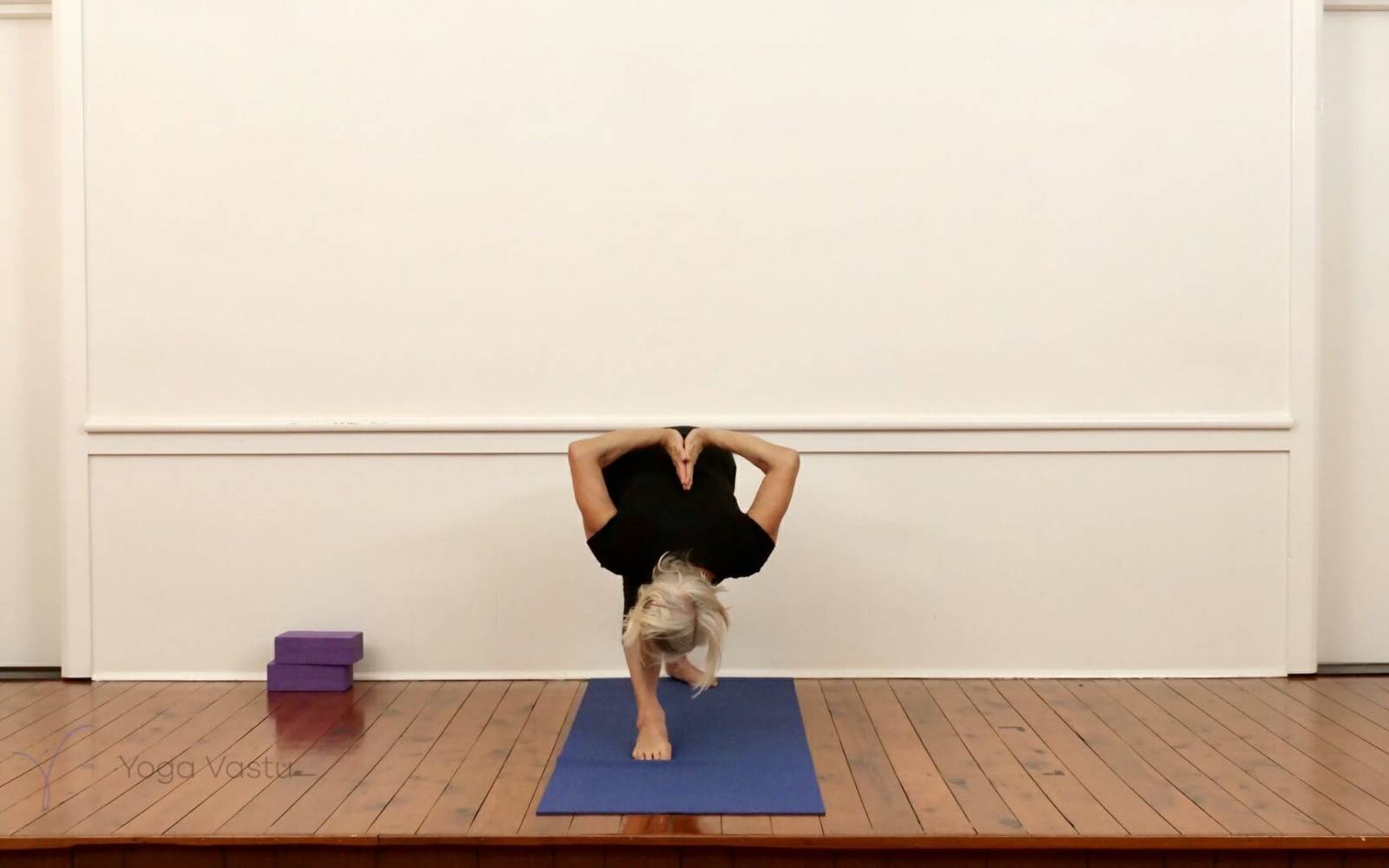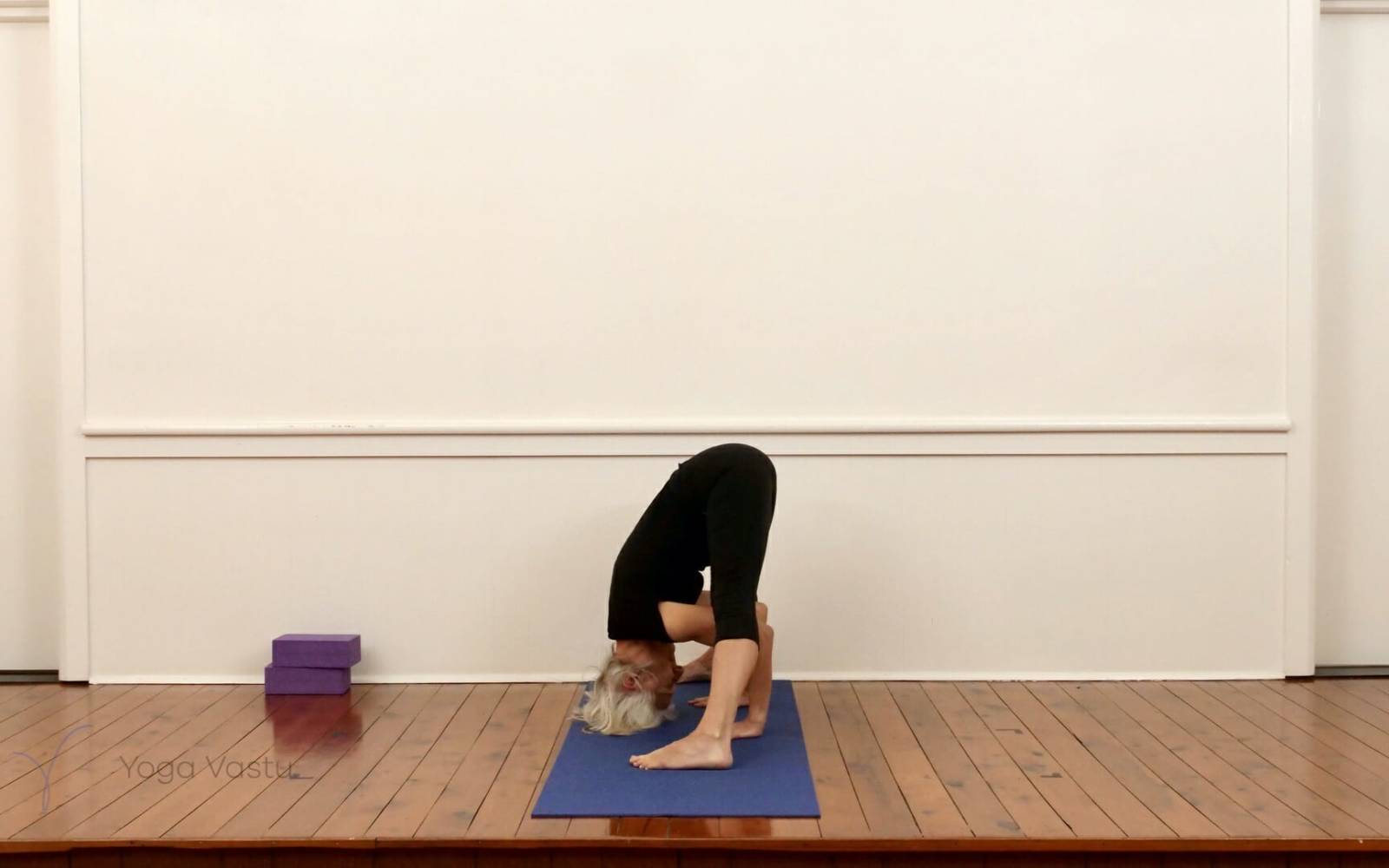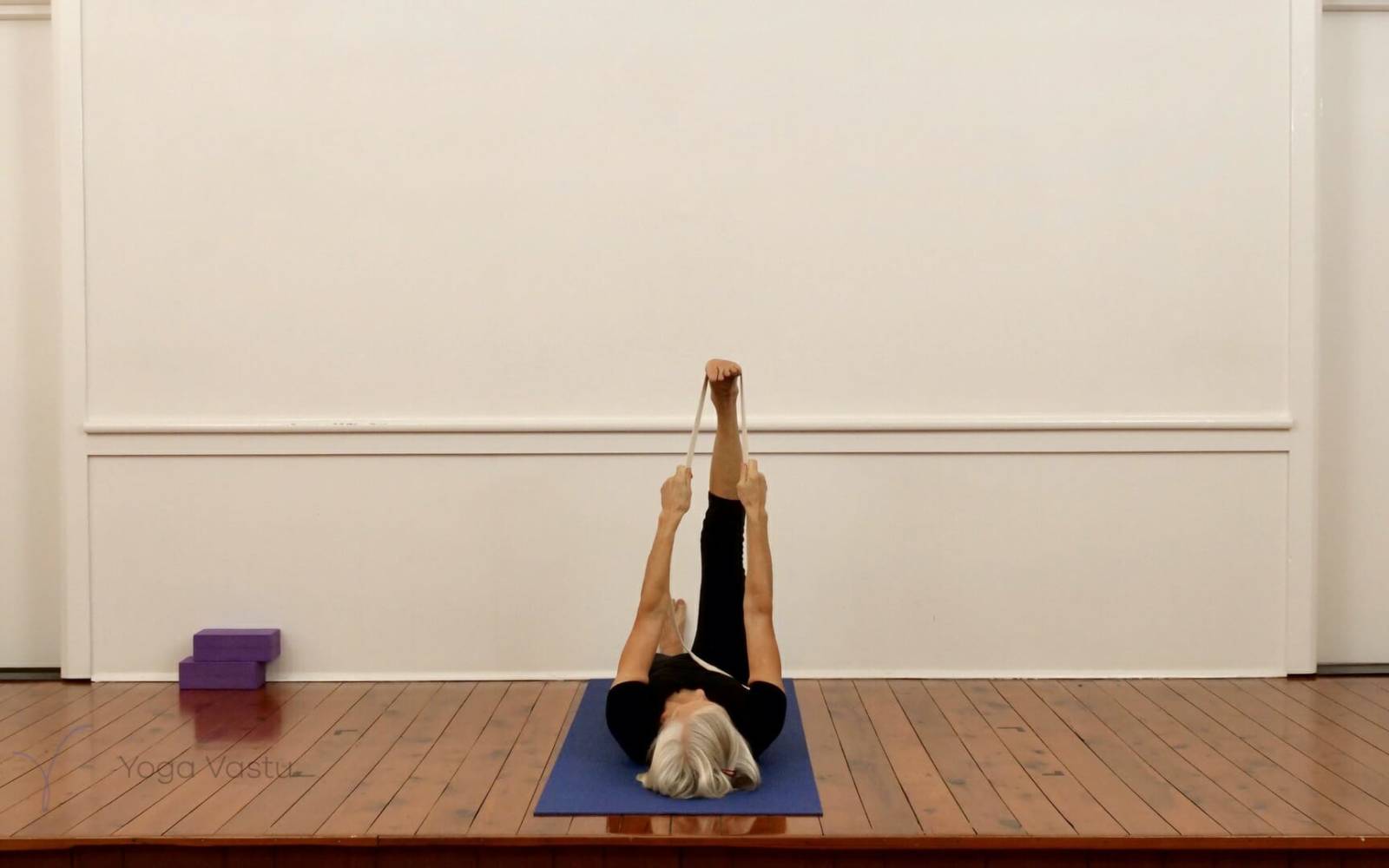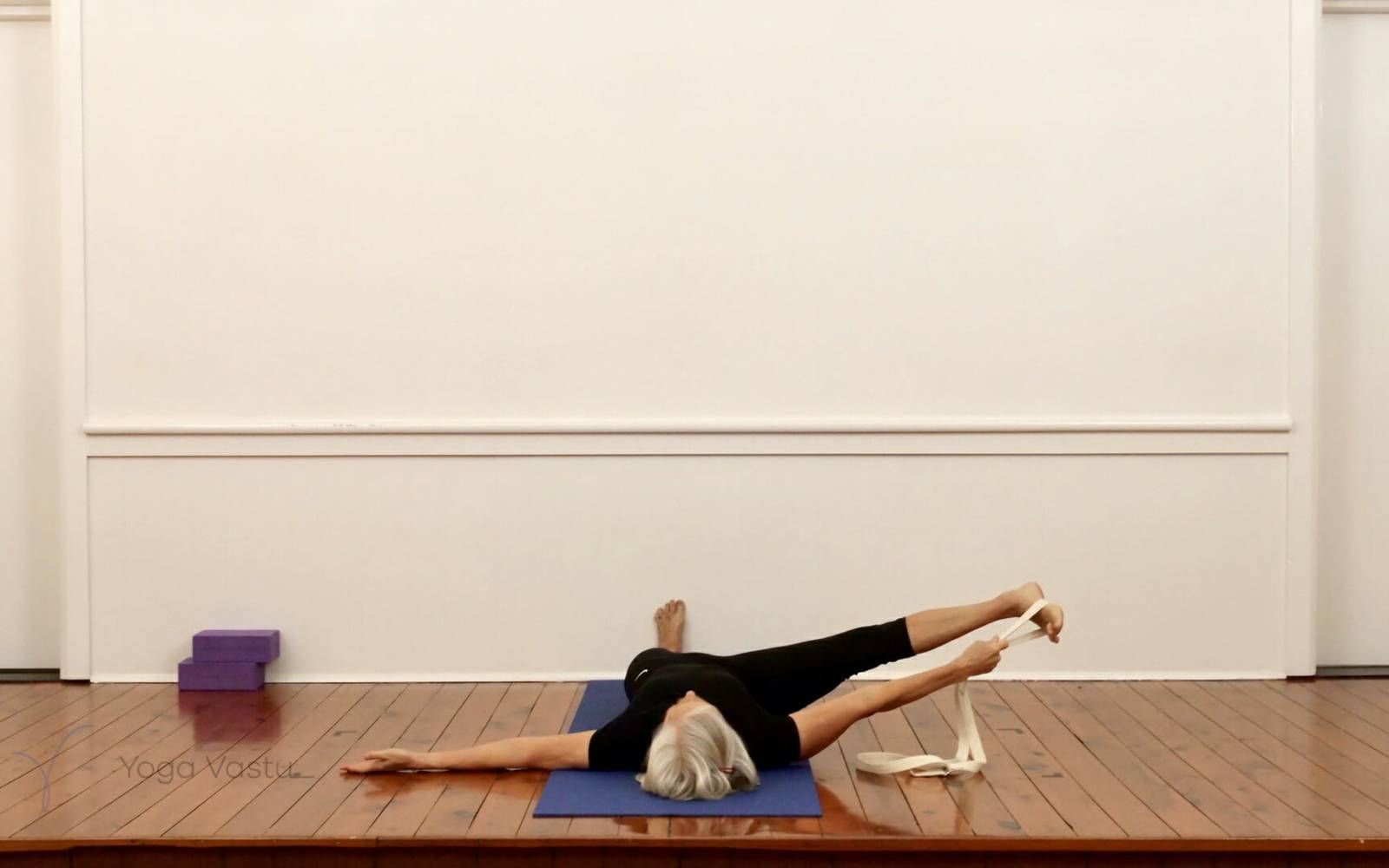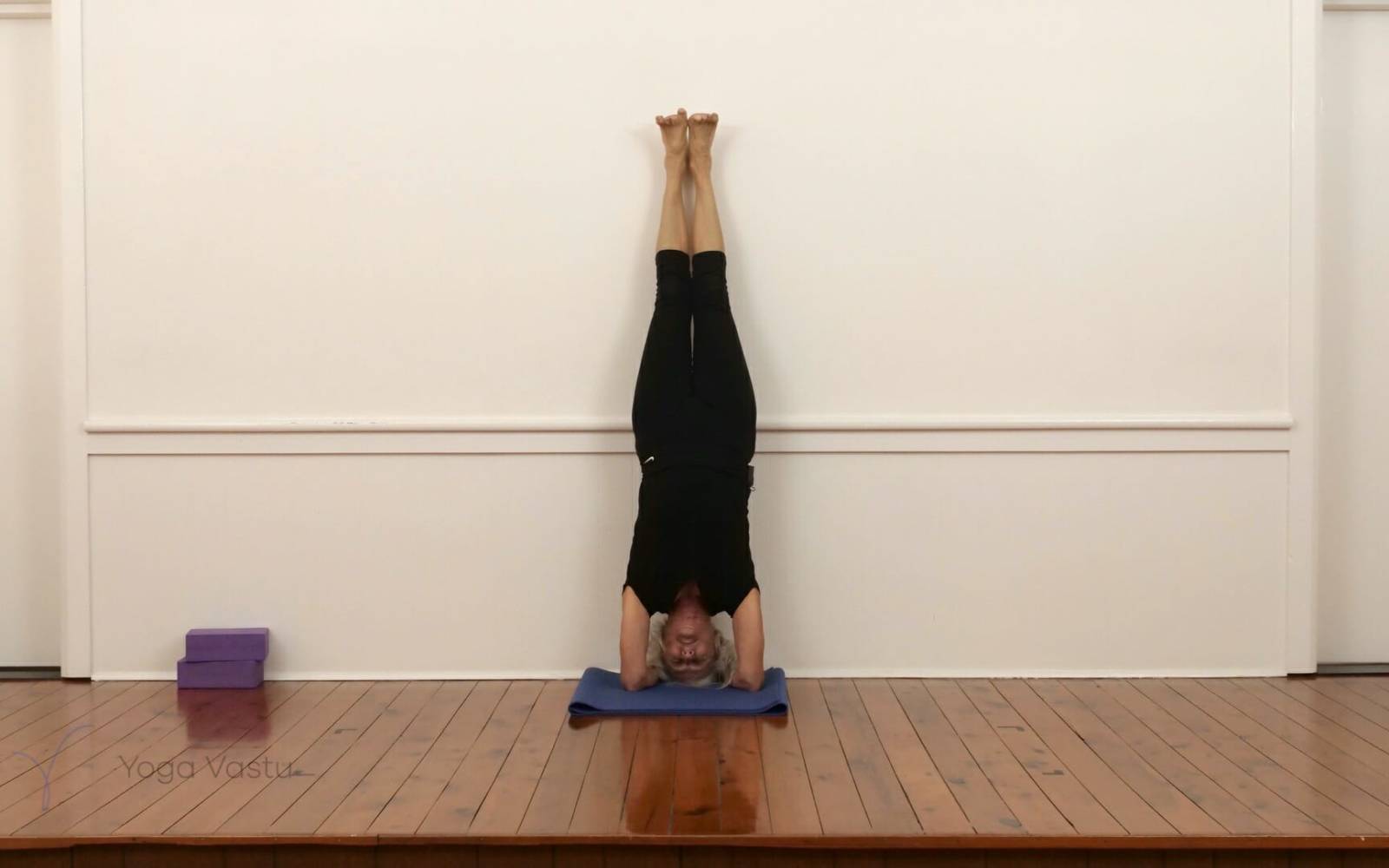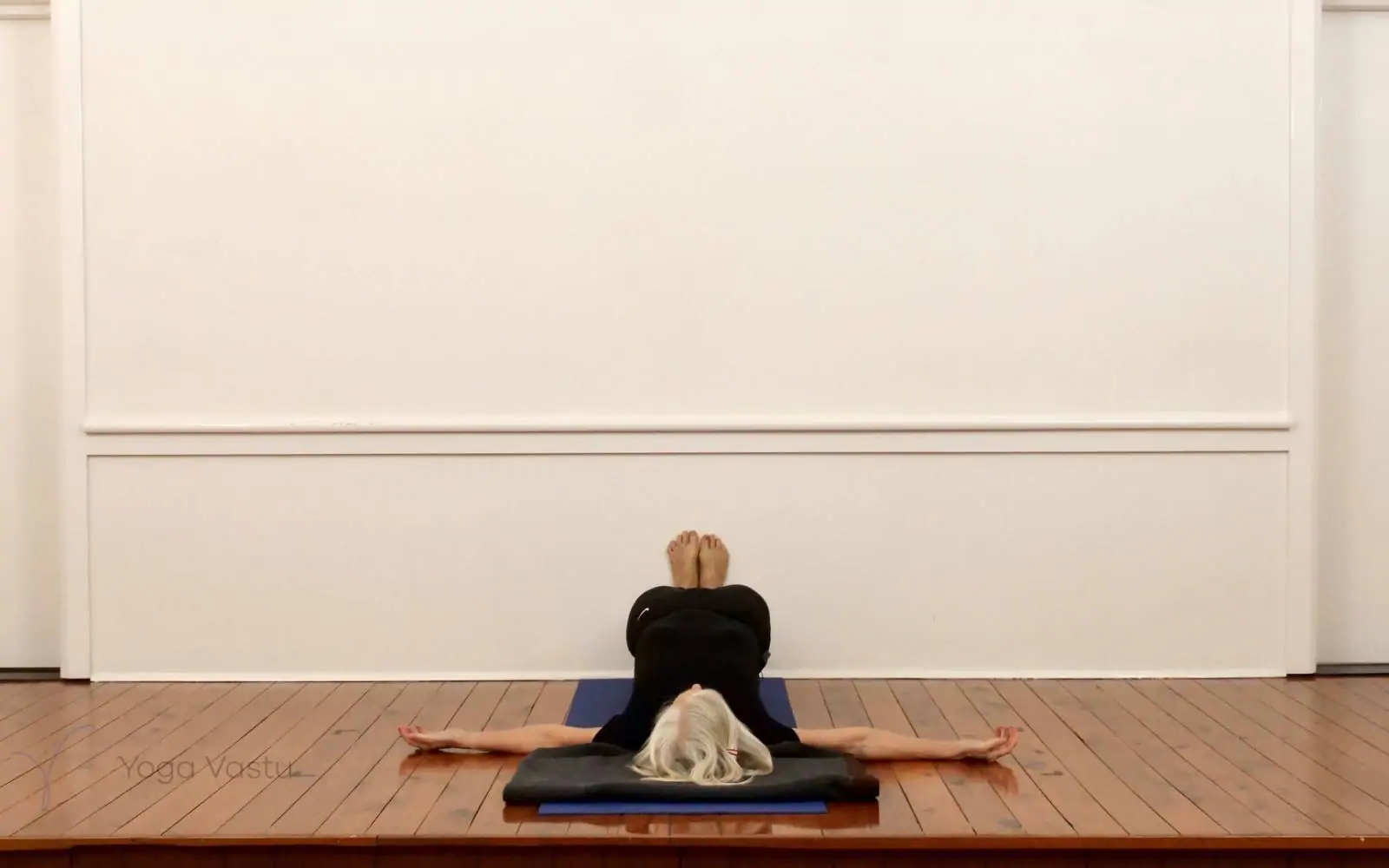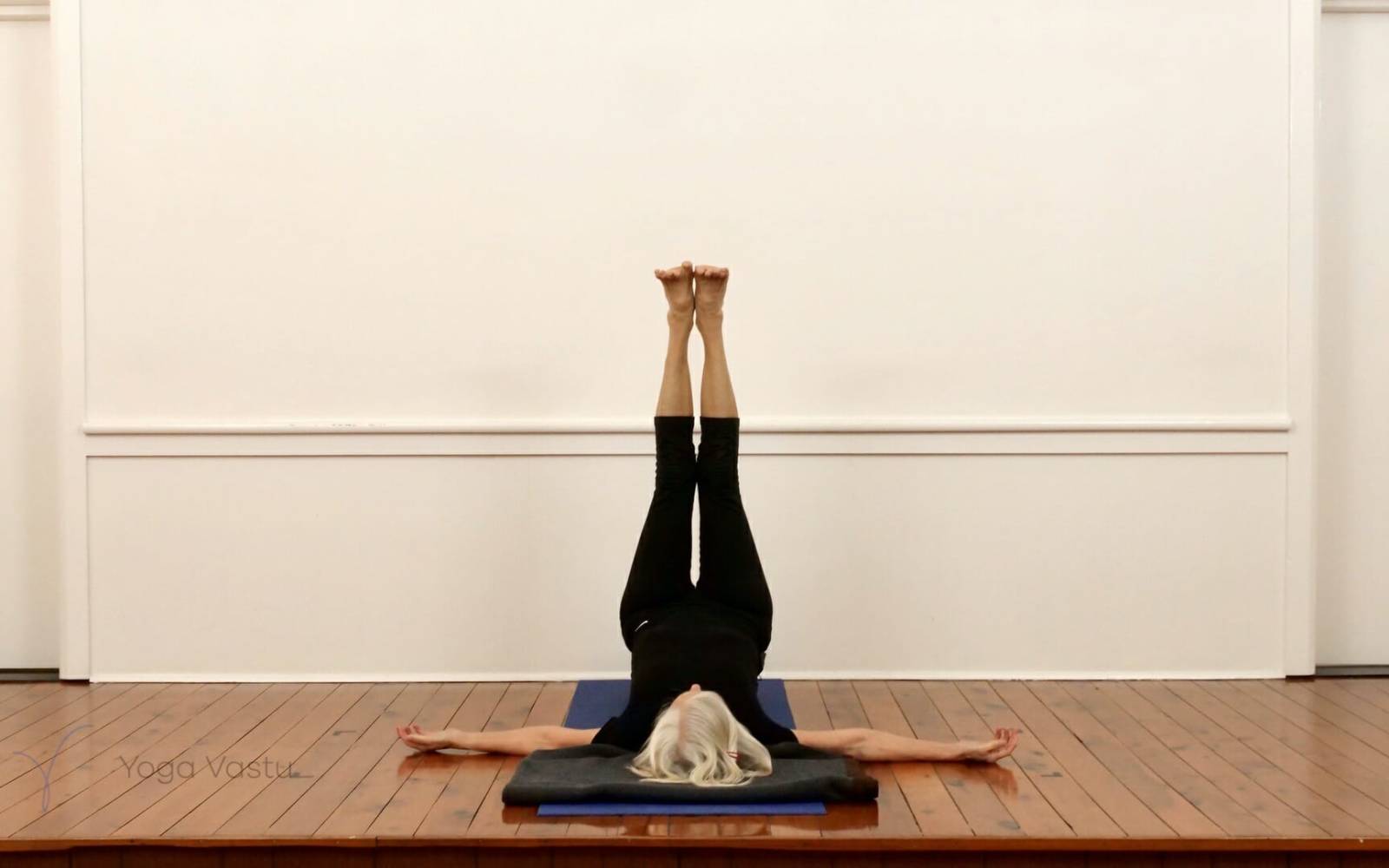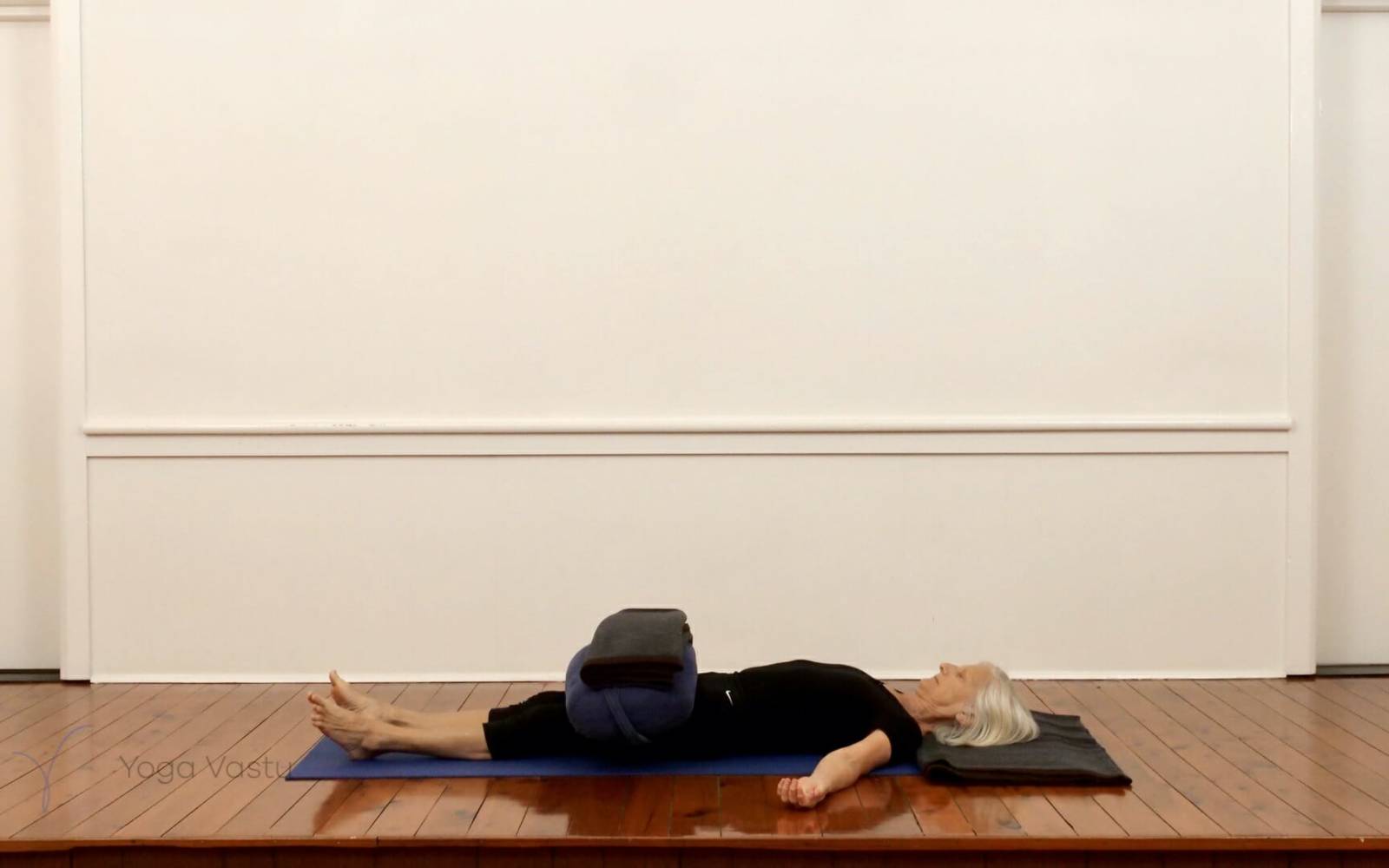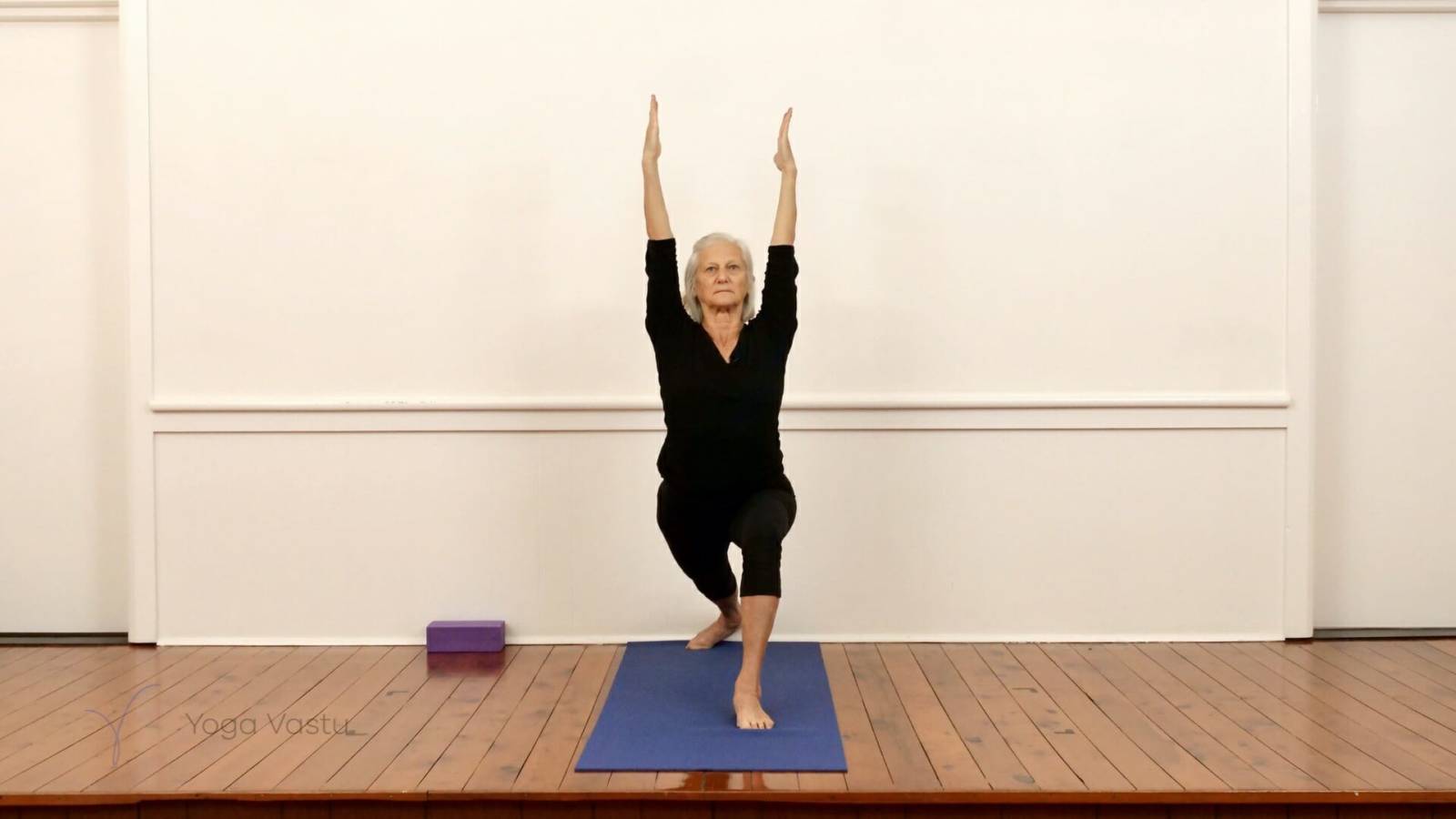Guide to this sequence
After lying back in Supta Baddha Konasana, this sequence starts a little more dynamically, with a few repetitions going from Virasana Forward to Adho Mukha Svanasana (Downward Facing Dog Pose) on the breath. You then move into four repetitions of stepping from Uttanasana to Dog Pose and back. This helps to sharpen our focus and increase our energy and motivation before coming to the standing pose sequence.
After doing Utkatasana with the back pelvis to the wall to set up a connection to the lower abdominal muscles and legs before the next two inversions, we add Full Arm Balance and Pincha Mayurasana to help open the chest and to bring extra blood flow to the head to “wake up” a little more.
The standing poses in this session are all done with the back foot to the wall.
This allows us to stay a few extra breaths in each pose, but also to use the wall support to bring stability and to facilitate additional corrective actions in each pose.
The full spectrum of Standing Asana is practised here: Trikonasana, Parsva Konasana. Virabhadrasana 1 and 2, Ardha Chandrasana, and two ways to improve Virabhadrasana 3. Then the twistings: Parivrtta Trikonasana and Parivrtta Parsva Konasana, Parsvottanasana, and Prasarita Padottanasana. Notice not just the actions and shapes you create in each pose but also the feeling of grounding and stability that can emerge as you go through this session.
Virasana and Parvatasana (fingers interlocked and arms extended up) to rest the legs before coming to Sirsasana, or preparation for those not doing the full inversion. Sarvangasana or Setu Bandha follow, and then we finish the sequence by coming quietly forward in simple cross-legs resting the forehead on a horizontal bolster or support to release the neck and shoulders before Savasana.
Savasana will feel a little different after each group of postures and each practice. Notice where you have come to today.
Illustrated sequence of video
Download and print the free illustrated sequence of this video.
Video stills from this sequence
